Novel Method for Determining the Height of the Stable Boundary Layer under Low-Level Jet by Judging the Shape of the Wind Velocity Variance Profile
Abstract
1. Introduction
2. Methods
3. Results and Discussion
4. Conclusions
Author Contributions
Funding
Data Availability Statement
Acknowledgments
Conflicts of Interest
References
- Yin, J.; Gao, C.Y.; Hong, J.; Gao, Z.; Li, Y.; Li, X.; Fan, S.; Zhu, B. Surface Meteorological Conditions and Boundary Layer Height Variations During an Air Pollution Episode in Nanjing, China. J. Geophys. Res.-Atmos. 2019, 124, 3350–3364. [Google Scholar] [CrossRef]
- Sun, H.J.; Shi, H.R.; Chen, H.Y.; Tang, G.Q.; Sheng, C.; Che, K.; Chen, H.B. Evaluation of a Method for Calculating the Height of the Stable Boundary Layer Based on Wind Profile Lidar and Turbulent Fluxes. Remote Sens. 2021, 13, 3596. [Google Scholar] [CrossRef]
- Peña, A.; Gryning, S.-E.; Hahmann, A.N. Observations of the atmospheric boundary layer height under marine upstream flow conditions at a coastal site. J. Geophys. Res.-Atmos. 2013, 118, 1924–1940. [Google Scholar] [CrossRef]
- Jiang, Q.; Wang, Q. Characteristics and Scaling of the Stable Marine Internal Boundary Layer. J. Geophys. Res.-Atmos. 2021, 126, e2021JD035510. [Google Scholar] [CrossRef]
- Lan, C.; Liu, H.; Katul, G.G.; Li, D.; Finn, D. Turbulence Structures in the Very Stable Boundary Layer Under the Influence of Wind Profile Distortion. J. Geophys. Res.-Atmos. 2022, 127, e2022JD036565. [Google Scholar] [CrossRef]
- Ganeshan, M.; Yang, Y. A Regional Analysis of Factors Affecting the Antarctic Boundary Layer During the Concordiasi Campaign. J. Geophys. Res.-Atmos. 2018, 123, 10830–810841. [Google Scholar] [CrossRef]
- Rey-Sanchez, C.; Wharton, S.; Vilà-Guerau de Arellano, J.; Paw, U.K.T.; Hemes, K.S.; Fuentes, J.D.; Osuna, J.; Szutu, D.; Ribeiro, J.V.; Verfaillie, J.; et al. Evaluation of Atmospheric Boundary Layer Height From Wind Profiling Radar and Slab Models and Its Responses to Seasonality of Land Cover, Subsidence, and Advection. J. Geophys. Res.-Atmos. 2021, 126, e2020JD033775. [Google Scholar] [CrossRef]
- Li, H.; Yang, Y.; Hu, X.-M.; Huang, Z.; Wang, G.; Zhang, B.; Zhang, T. Evaluation of retrieval methods of daytime convective boundary layer height based on lidar data. J. Geophys. Res. Atmos. 2017, 122, 4578–4593. [Google Scholar] [CrossRef]
- Liu, R.; Liu, S.; Huang, H.; Dai, Y.; Zeng, X.; Yuan, H.; Wei, Z.; Lu, X.; Wei, N.; Zhang, S.; et al. The Effect of Surface Heating Heterogeneity on Boundary Layer Height and Its Dependence on Background Wind Speed. J. Geophys. Res.-Atmos. 2022, 127, e2022JD037168. [Google Scholar] [CrossRef]
- Banta, R.M. Stable-boundary-layer regimes from the perspective of the low-level jet. Acta Geophys. 2008, 56, 58–87. [Google Scholar] [CrossRef]
- Banta, R.M.; Mahrt, L.; Vickers, D.; Sun, J.; Balsley, B.B.; Pichugina, Y.L.; Williams, E.J. The Very Stable Boundary Layer on Nights with Weak Low-Level Jets. J. Atmos. Sci. 2007, 64, 3068–3090. [Google Scholar] [CrossRef]
- Banta, R.M.; Pichugina, Y.L.; Brewer, W.A. Turbulent Velocity-Variance Profiles in the Stable Boundary Layer Generated by a Nocturnal Low-Level Jet. J. Atmos. Sci. 2006, 63, 2700–2719. [Google Scholar] [CrossRef]
- Banta, R.M.; Pichugina, Y.L.; Newsom, R.K. Relationship between Low-Level Jet Properties and Turbulence Kinetic Energy in the Nocturnal Stable Boundary Layer. J. Atmos. Sci. 2003, 60, 2549–2555. [Google Scholar] [CrossRef]
- Pichugina, Y.L.; Tucker, S.C.; Banta, R.M.; Brewer, W.A.; Kelley, N.D.; Jonkman, B.J.; Newsom, R.K. Horizontal-Velocity and Variance Measurements in the Stable Boundary Layer Using Doppler Lidar: Sensitivity to Averaging Procedures. J. Atmos. Ocean. Technol. 2008, 25, 1307–1327. [Google Scholar] [CrossRef]
- Moreira, G.D.A.; Marques, M.T.A.; Nakaema, W.; Moreira, A.C.D.C.A.; Landulfo, E. Detecting the planetary boundary layer height from low-level jet with Doppler lidar measurements. In Proceedings of the SPIE Remote Sensing, Toulouse, France, 20 October 2015. [Google Scholar]
- Vickers, D.; Mahrt, A.L. Evaluating Formulations of Stable Boundary Layer Height. J. Appl. Meteorol. 2004, 43, 1736. [Google Scholar] [CrossRef]
- Lemone, M.A.; Tewari, M.; Chen, F.; Dudhia, J. Objectively Determined Fair-Weather NBL Features in ARW-WRF and Their Comparison to CASES-97 Observations. Mon. Weather Rev. 2014, 142, 2709–2732. [Google Scholar] [CrossRef]
- Schween, J.H.; Hirsikko, A.; Lohnert, U.; Crewell, S. Mixing-layer height retrieval with ceilometer and Doppler lidar: From case studies to long-term assessment. Atmos. Meas. Tech. 2014, 7, 3685–3704. [Google Scholar] [CrossRef]
- Shukla, K.K.; Phanikumar, D.V.; Newsom, R.K.; Kumar, K.N.; Ratnam, M.V.; Naja, M.; Singh, N. Estimation of the mixing layer height over a high altitude site in Central Himalayan region by using Doppler lidar. J. Atmos. Sol.-Terr. Phys. 2014, 109, 48–53. [Google Scholar] [CrossRef]
- Stull, R.B. An Introduction to Boundary Layer Meteorology; Springer Science & Business Media: New York, NY, USA, 1988. [Google Scholar]
- Joffre, S.M.; Kangas, M.; Heikinheimo, M.; Kitaigorodskii, S.A. Variability of the stable and unstable atmospheric boundary-layer height and its scales over a boreal forest. Bound.-Layer Meteorol. 2001, 99, 429–450. [Google Scholar] [CrossRef]
- Vogelezang, D.H.P.; Holtslag, A.A.M. Evaluation and model impacts of alternative boundary-layer height formulations. Bound.-Layer Meteorol. 1996, 81, 245–269. [Google Scholar] [CrossRef]
- Seidel, D.J.; Ao, C.O.; Li, K. Estimating climatological planetary boundary layer heights from radiosonde observations: Comparison of methods and uncertainty analysis. J. Geophys. Res.-Atmos. 2010, 115, D16113. [Google Scholar] [CrossRef]
- Seidel, D.J.; Zhang, Y.; Beljaars, A.; Golaz, J.C.; Jacobson, A.R.; Medeiros, B. Climatology of the planetary boundary layer over the continental United States and Europe. J. Geophys. Res. 2012, 117, D17106. [Google Scholar] [CrossRef]
- Nieuwstadt, F.T.M. The Turbulent Structure of the Stable, Nocturnal Boundary Layer. J. Atmos. Sci. 1984, 41, 2202–2216. [Google Scholar] [CrossRef]
- Bonner, W.D. Climatology of the low level jet. Mon. Weather. Rev. 1968, 96, 833–850. [Google Scholar] [CrossRef]
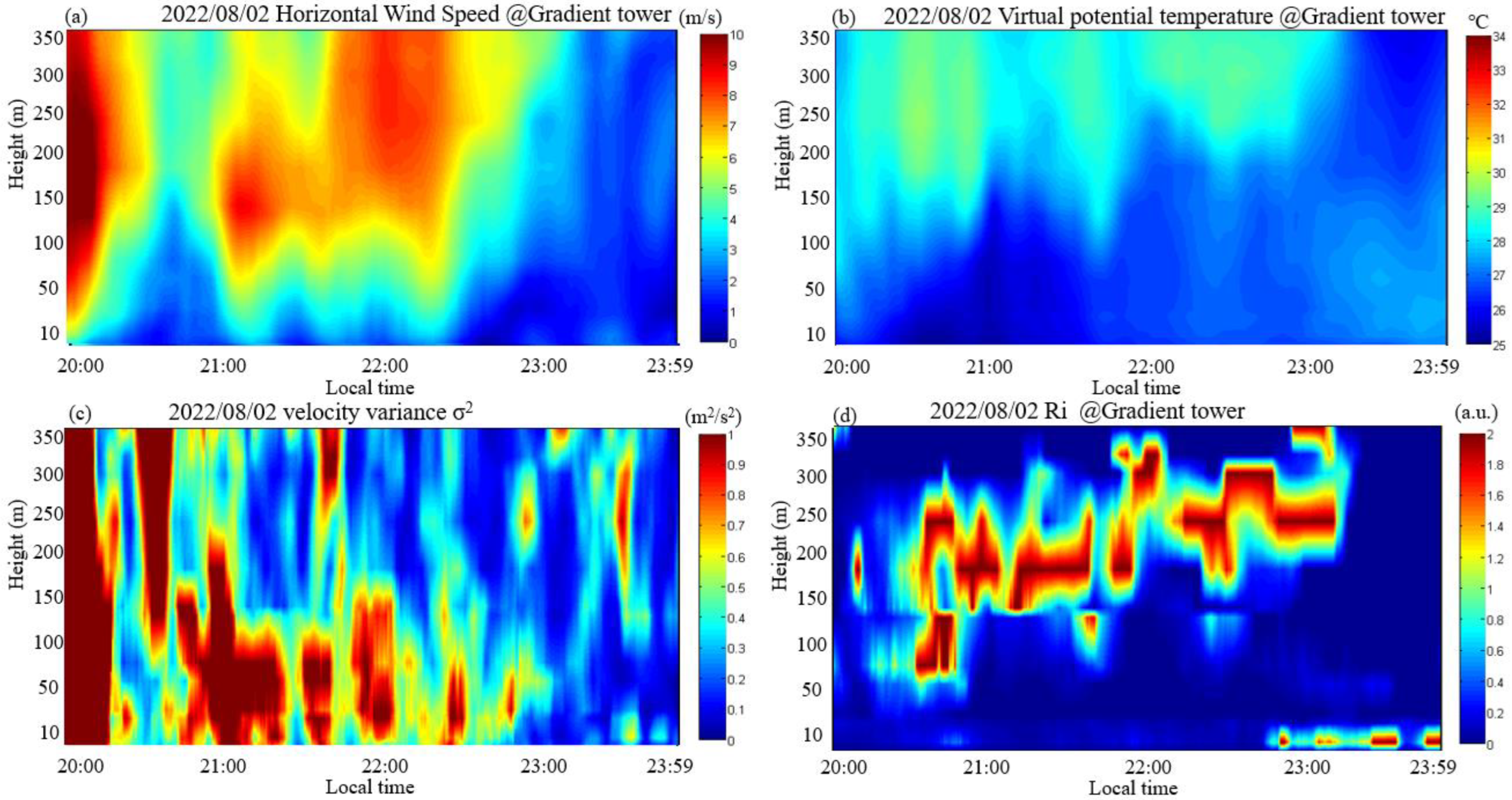
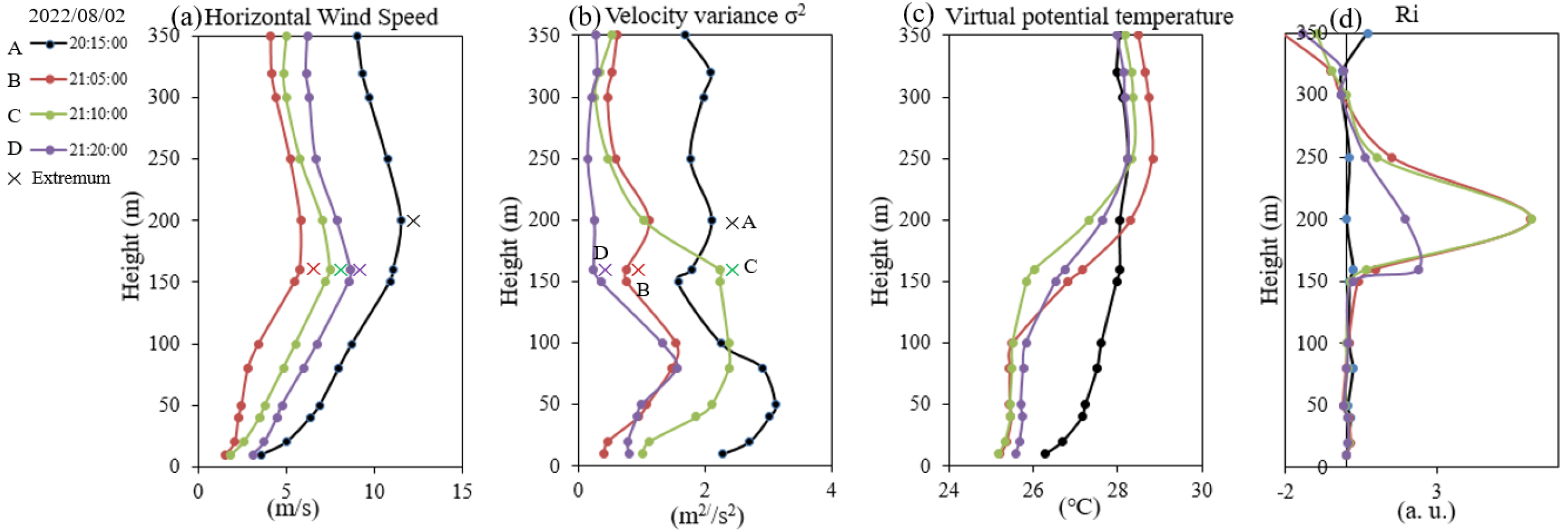
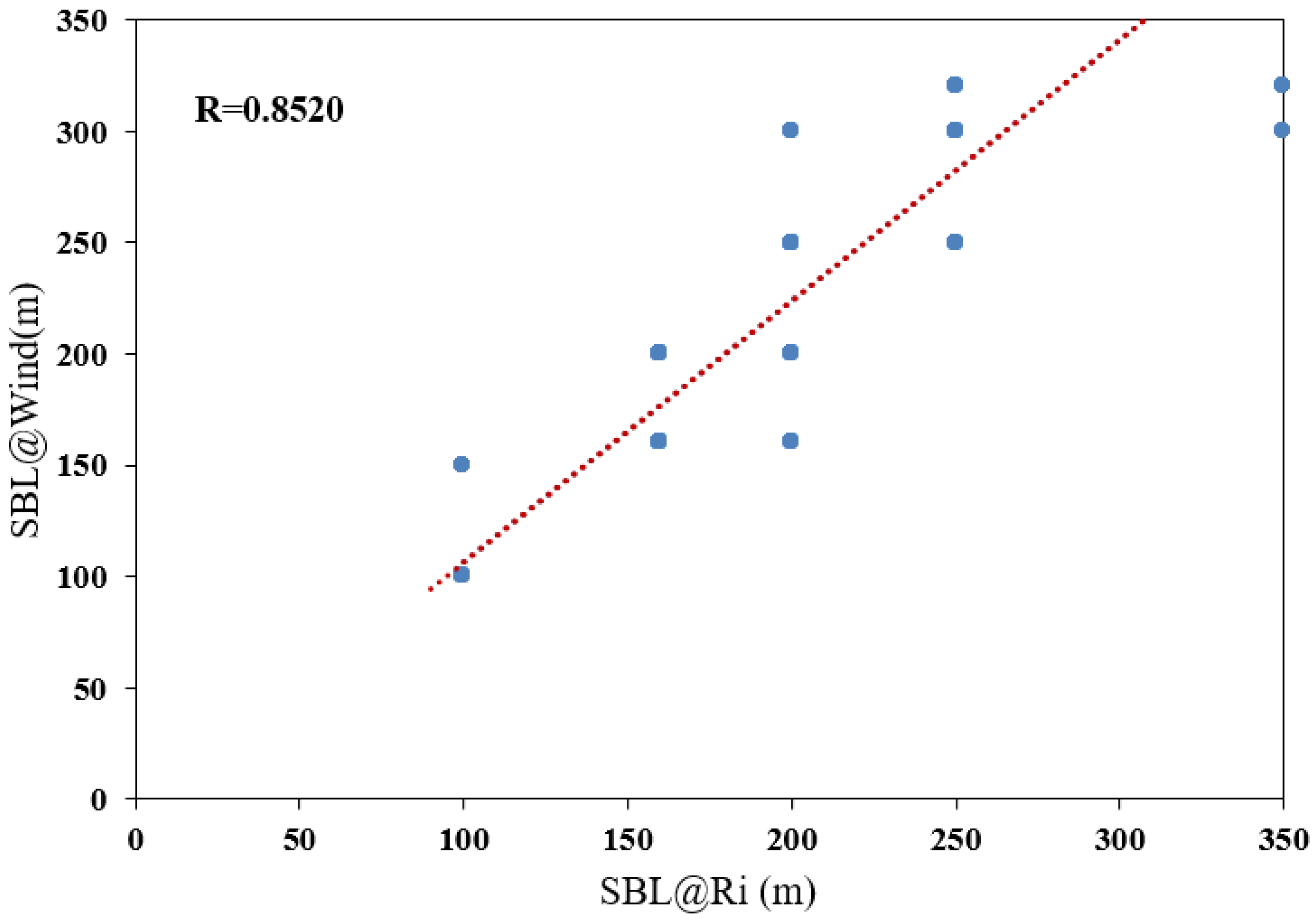
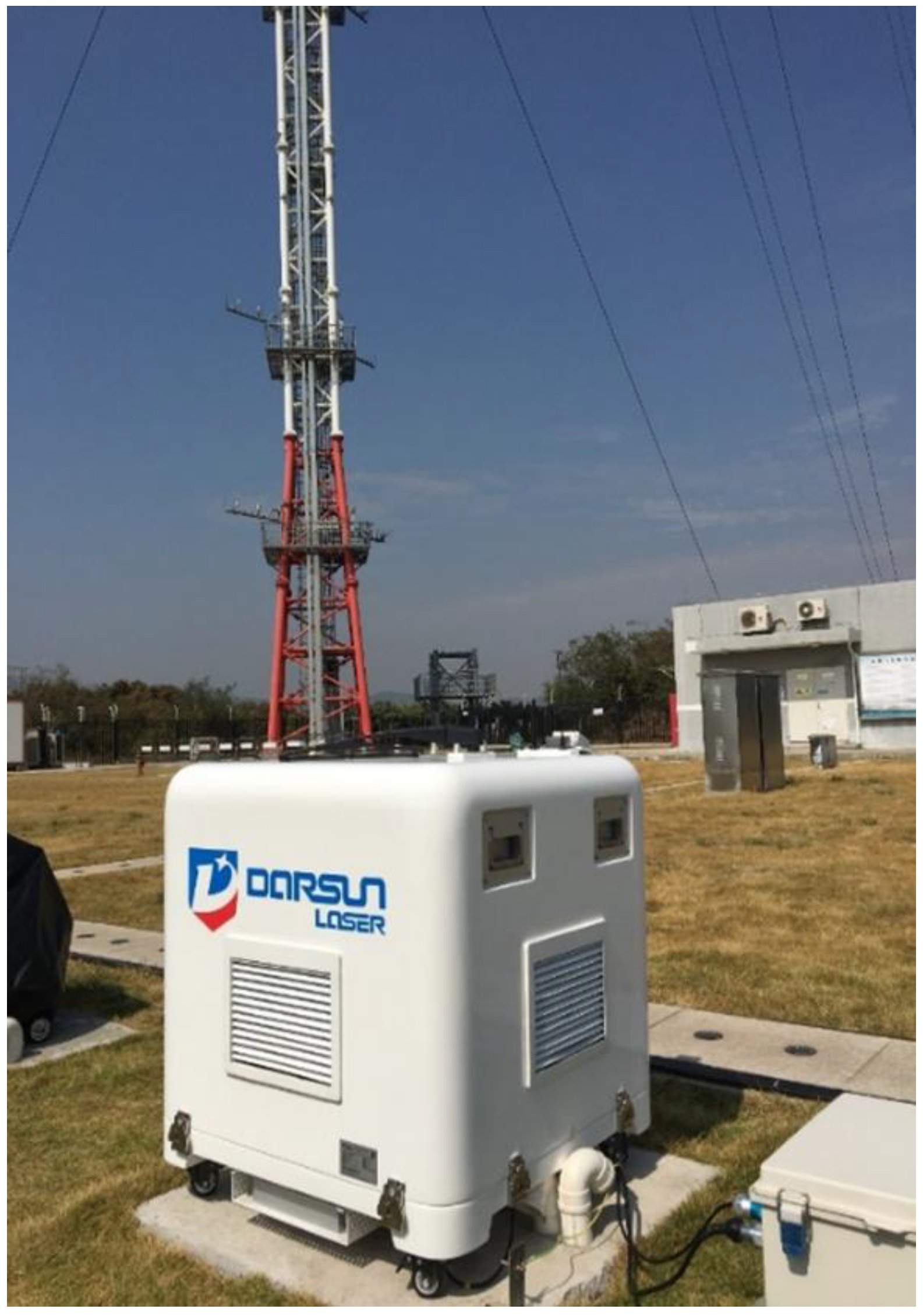
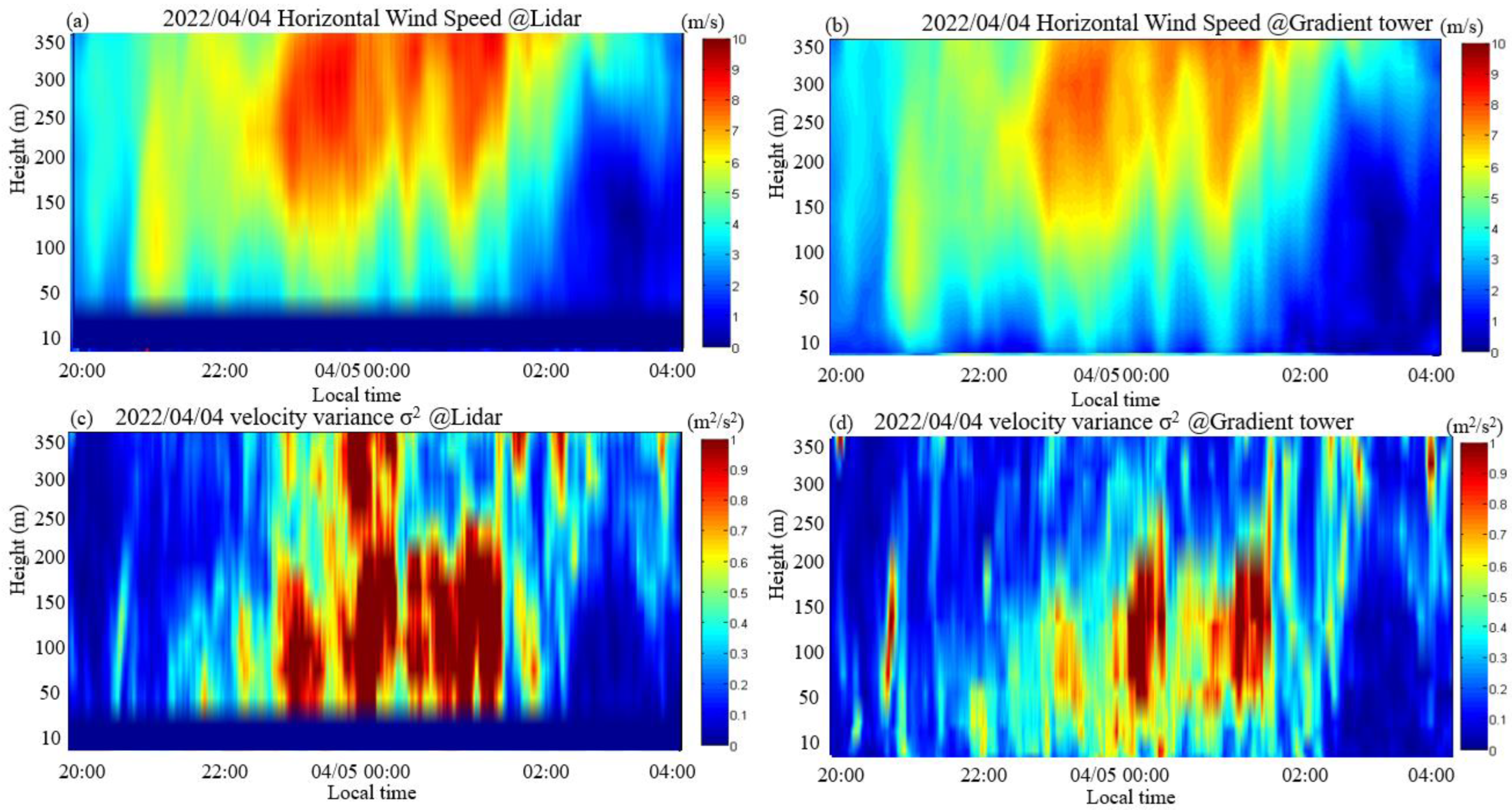
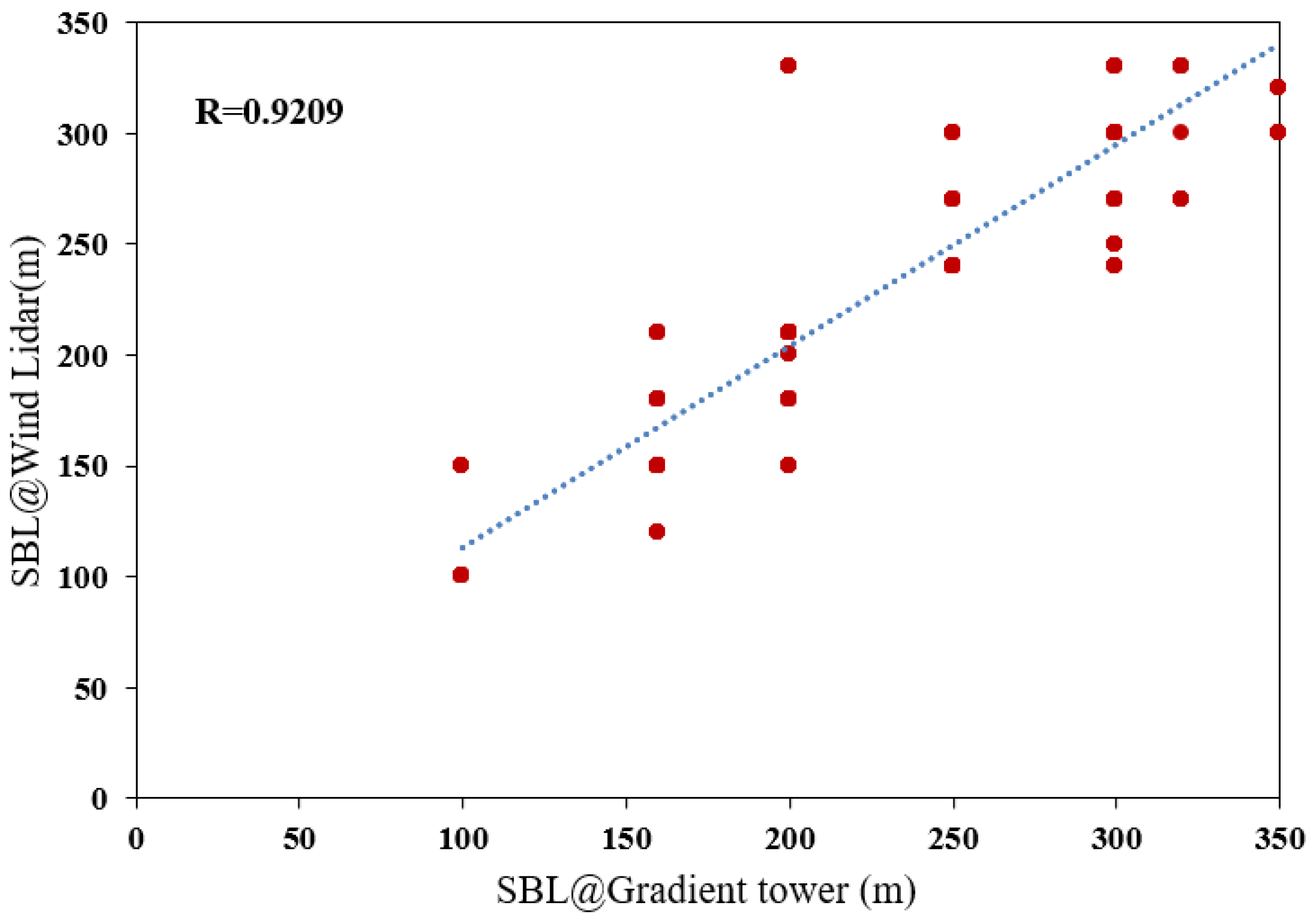
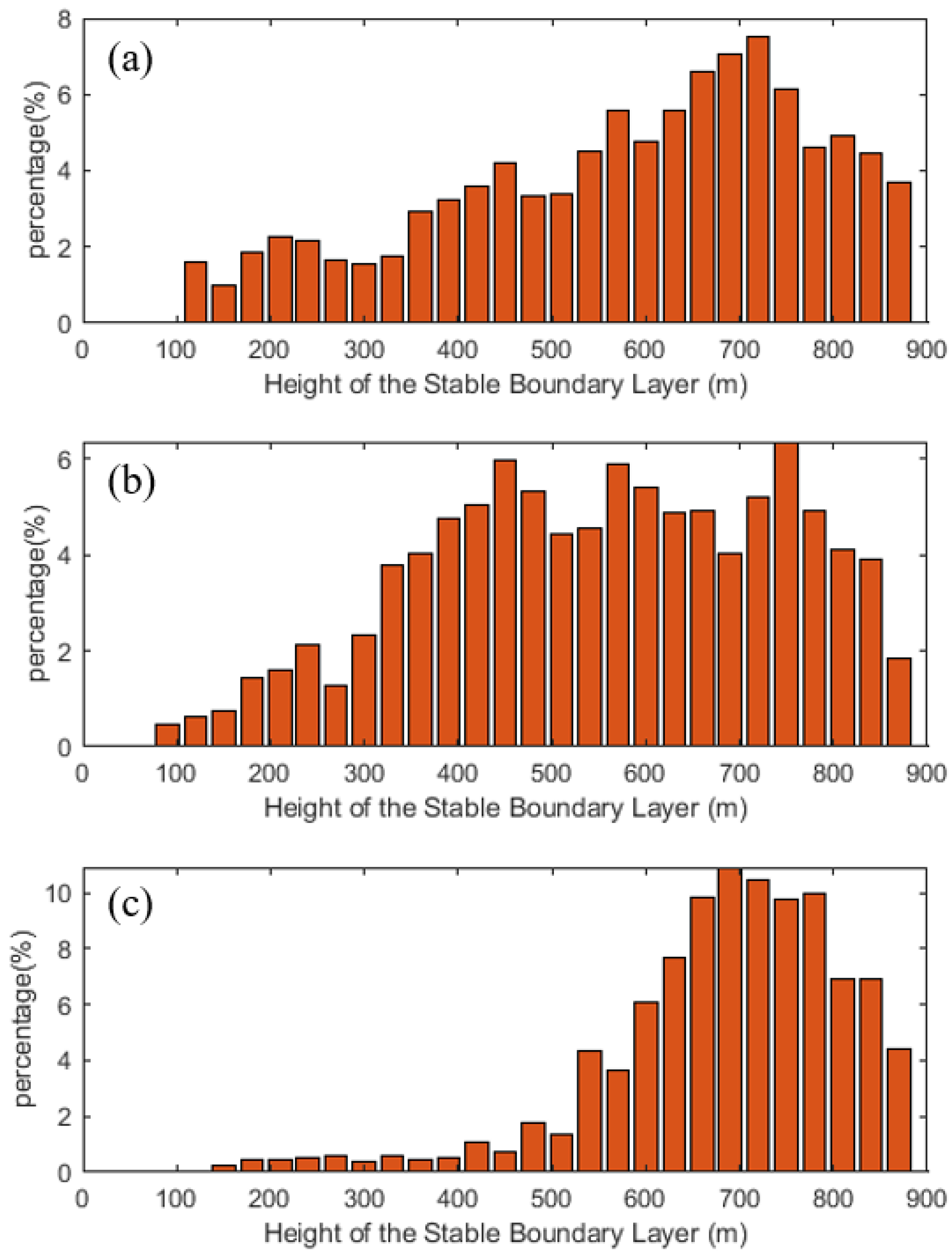
| Type | A | B | C | D |
|---|---|---|---|---|
| Frequency | 16,840 | 16,521 | 1460 | 18,995 |
| Proportion | 31.3% | 30.7% | 2.7% | 35.3% |
| Correlation Coefficient | Average Error (m) | Relative Error (%) |
|---|---|---|
| 0.8520 | 27.48 | 17.17 |
| Metrics | Technical Performance Requirements |
|---|---|
| Minimum detection altitude | ≤30 m |
| Maximum detection altitude | 6 km |
| Distance resolution | 15 m |
| Temporal resolution of wind profile | 5 s |
| Errors of wind speed measurement (standard deviation) | ≤0.3 m s−1 |
| Errors of wind direction measurement (root mean squared error) | ≤3° |
| Range of vertical wind speed measurement | 0–60 m s−1 |
| Range of wind direction measurement | 0°–360° |
| Correlation Coefficient | Average Error (m) | Relative Error (%) |
|---|---|---|
| 0.9209 | 17.62 | 8.21 |
Disclaimer/Publisher’s Note: The statements, opinions and data contained in all publications are solely those of the individual author(s) and contributor(s) and not of MDPI and/or the editor(s). MDPI and/or the editor(s) disclaim responsibility for any injury to people or property resulting from any ideas, methods, instructions or products referred to in the content. |
© 2023 by the authors. Licensee MDPI, Basel, Switzerland. This article is an open access article distributed under the terms and conditions of the Creative Commons Attribution (CC BY) license (https://creativecommons.org/licenses/by/4.0/).
Share and Cite
Xian, J.; Zhang, N.; Lu, C.; Yang, H.; Qiu, Z. Novel Method for Determining the Height of the Stable Boundary Layer under Low-Level Jet by Judging the Shape of the Wind Velocity Variance Profile. Remote Sens. 2023, 15, 3638. https://doi.org/10.3390/rs15143638
Xian J, Zhang N, Lu C, Yang H, Qiu Z. Novel Method for Determining the Height of the Stable Boundary Layer under Low-Level Jet by Judging the Shape of the Wind Velocity Variance Profile. Remote Sensing. 2023; 15(14):3638. https://doi.org/10.3390/rs15143638
Chicago/Turabian StyleXian, Jinhong, Ning Zhang, Chao Lu, Honglong Yang, and Zongxu Qiu. 2023. "Novel Method for Determining the Height of the Stable Boundary Layer under Low-Level Jet by Judging the Shape of the Wind Velocity Variance Profile" Remote Sensing 15, no. 14: 3638. https://doi.org/10.3390/rs15143638
APA StyleXian, J., Zhang, N., Lu, C., Yang, H., & Qiu, Z. (2023). Novel Method for Determining the Height of the Stable Boundary Layer under Low-Level Jet by Judging the Shape of the Wind Velocity Variance Profile. Remote Sensing, 15(14), 3638. https://doi.org/10.3390/rs15143638






